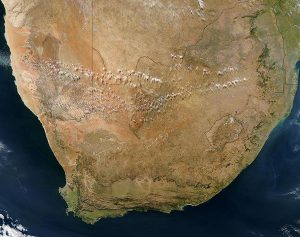
The threat of emerging infectious diseases is expanding as climate change is altering the range of animals, people and the pathogens that they carry.
Warmer and wetter weather, as well as changing land use and global transportation means that diseases don’t remain behind borders, and populations are being exposed to new diseases like Zika, ebola and new strains of influenza.
These growing dangers led Lois Parshley, a freelance writer, to write about global health, climate change and infectious disease modeling.
She reported on an international collaboration of researchers, including EcoHealth Alliance, a New York-based nonprofit that works on pandemic prevention, and the National Aeronautics Space Administration’s Goddard Space Center, who are investigating the connection between human, animal and environmental health. The scientists were working to develop models for predicting disease outbreaks before they occur.
Parshley traveled to South Africa to shadow field work on Rift Valley fever, where the researchers hoped to learn how to use vegetation and climatic models to forecast the spread of the Rift Valley virus. It’s a mosquito-borne virus that causes abortion and death in livestock and wildlife and can be transmitted to people. The U.S. Department of Defense is funding the project.
Though the virus was first identified in Kenya’s Rift Valley in 1931 and was largely confined to that area for decades, the disease has spread, through trade, including to the Arabian peninsula. There are fears it could spread to Europe and North America because the mosquito that carries the disease can now be found in both continents.
Parshley wrote about this research for Scientific American. Her story about the research: “How Climate Change is Making it Harder to Predict Outbreaks” also won a second-place award in AHCJ’s Excellence in Health Care Journalism awards for 2018.
The narrative piece provides a vivid picture of how the researchers are working with local farmers and health officials to understand how weather, agriculture, and interactions between people and animals might create risk factors for disease, and how a changing climate might alter these relationships.
There were many challenges in covering the story as a freelance journalist, as many magazines have cut their travel budgets, making them wary of pieces like this that require large expenses, Parshley said
But in a “How I Did It” story for AHCJ, Parshley explains that she was dogged in her pursuit of the story because she wants to make climate change and global health relatable to Western audiences.
“I try to highlight the ways a changing environment is already impacting human lives,” she said. “Teasing apart the ways we interact and depend on the environment around us sheds light on phenomena that can appear inexplicable or put individual trends into a larger context.”
She added that “in a moment where the media, and facts in general, are in question, explaining what is in fact, knowable about the changing world around us has never felt more relevant.”
For more reading:
- Covering climate change, infectious diseases and health: (AHCJ, March 2019)
- Imperative for covering climate change as a health issue: (AHCJ, January 2019)
- Climate change and its impact on infectious diseases: (AHCJ webcast, January 2019)
- Researchers study Rift Valley fever as climate change increases risks: (AHCJ, January 2019)







